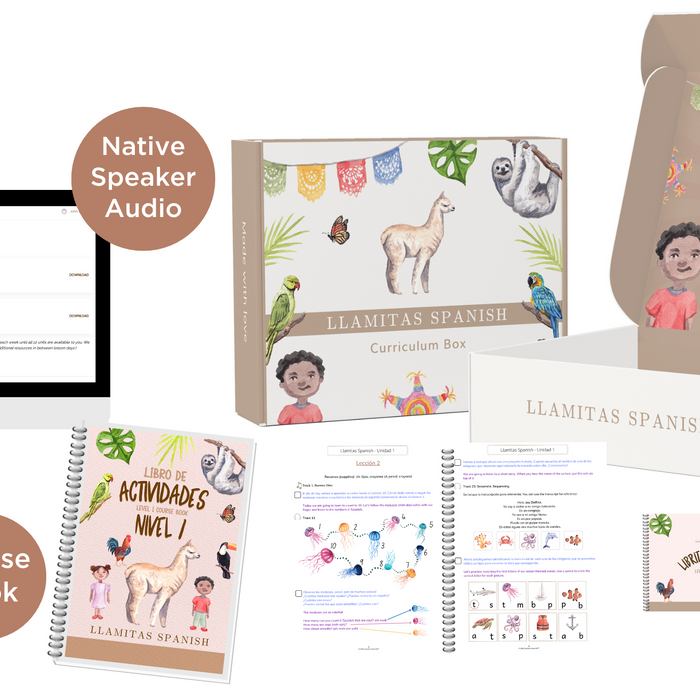These questions come from a second-year Spanish class. The underlined words feature new vocabulary from Chapter Five in the Breaking the Spanish Barrier (Level II). Students might well have their textbook open as we do this exercise in case they don’t remember what some of the vocabulary means. You will notice that most of the questions are fairly straightforward “yes” or “no” questions. In groups of two, one student will ask the first question of his partner. She will answer that question and then ask the second question back to him. He, in turn, answers that question and then poses the next question, until they get to the seventh question, the last one of the list. At that point, the person who answers that seventh question will now go back to ask the very first question of the very same list. The person who last time answered the first question will now get to ask it. The one who asked it will now answer. The second time through, the vocabulary is now more familiar, and the answers tend to flow more freely.
Once I feel that most students have gotten through those questions “twice,” I will announce that everyone is to change partners (if they worked with a partner on their left before, they will work with someone on their right). They now begin the second list of questions: “B”. They move down in the same routine, alternating back and forth, just like a ping-pong game.
During this exercise, I will wander around, helping students who are stuck, listening for good answers, offering praise, trying to resist making too many corrections. I will mostly try to enjoy the sounds from this Tower of Babel as a full class of students, speaking simultaneously, will make beautiful sounds of Spanish.
Your students will think that this drill practices vocabulary, which, of course, it does. Yet, unbeknownst to them, I have laced each drill with grammatical points that I want emphasized. First and foremost, all the questions model perfect grammar – there is subject/verb agreement, adjective/noun agreement, correct word order, stylish punctuation, and lovely choices of tense! A well-posed question often begets a well-constructed answer. I am trying to set my students up to speak beautifully. I want this practice to sink into them. I want Spanish to become a part of their lives.
If you look closely at the Warm-Up sentences in the lists above, you will notice that the present perfect tense is used quite a bit in the second bank of questions. Not so coincidentally, Chapter Five in our text covered the present perfect. During the Warm-Up, I routinely include many sentences that practice the grammar we are studying. I don’t make a big deal about it. It is a bit like subliminal advertising. The grammar is there, living, breathing, coming alive. The students are having fun speaking in Spanish, and I am helping them by setting them up to say perfectly constructed sentences!
Above all, I want students to speak. I read an article once that reported that the average student in a language classroom actually speaks less than fourteen seconds of the target language each class period. That’s remarkable! Why does that happen? I’m afraid that the answer is obvious: we language teachers love to talk. We dominate the classroom. We tend to talk all the time.
This Warm-Up exercise is the perfect antidote. This drill runs from three to four minutes. In that time, your students will have each posed and then answered fourteen questions. They will have spoken twenty-eight times! You have given them a gift right at the beginning of each class. Now, if there is an unexpected fire drill or power failure or unforeseen event that cuts class short, you can smile knowing that your charges have spoken significantly more than most students usually speak in a full week!
Part of the success of this activity depends on your willingness to “let go.” Students will make some mistakes that you won’t be able to correct! A few students will even whisper – or joke around – in English. Yet, the majority of students will be on task. They are actively participating.
You can even have them create their own Warm-Up questions on occasion (I suggest that they turn them in to you a day in advance for proofreading – it is important that the model questions be accurate!). Remember, students love being asked for their input. When it’s appropriate, enter their world. You’re simply increasing the odds that they will be more involved in their own education, and this is an equation where everybody wins.
In this exercise, students are asked to listen and to speak. To enjoy this activity. To be fearless of making an error. As young children, we spoke long before we knew any rules. Our parents listened to our many grammatical errors while we kept yammering away. Through trial and error, we learned to speak our native tongue ably.
Give your students the best gift possible at the beginning of each and every class. Have them speak to each other in groups of two. Follow up a little, if you want, as a whole group. If you heard some great answers, ask those questions back to your students and let them shine in front of their classmates.
The Warm-Up is the best way to start each and every class. Do it. Every day. This is the one activity I ALWAYS, ALWAYS do. Every day.





